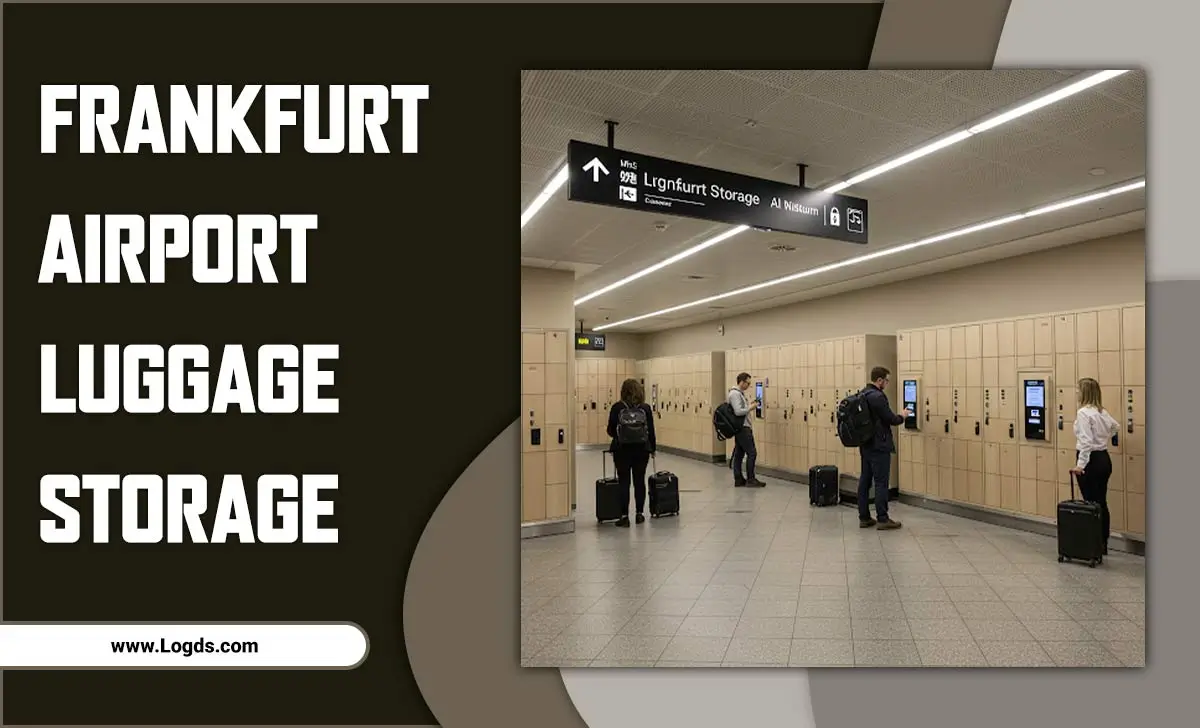Bohol’s food neighborhoods offer diverse culinary delights, from oceanfront seafood to heartland farm-to-table experiences. This guide helps you explore them easily.
Planning a trip to Bohol, Philippines? You’re in for a treat! This beautiful island is more than just stunning beaches and natural wonders; it boasts a surprisingly rich and varied food scene. But where do you even begin to find the best places to eat?
It can feel a bit overwhelming, right? Don’t worry, I’ve got you covered. This guide will break down Bohol’s unique “food neighborhoods,” making it super simple to discover delicious local flavors and international favorites. Get ready to eat your way through Bohol like a pro!
Understanding Bohol’s Culinary Landscape
Bohol isn’t a single city with a concentrated downtown; it’s an island province dotted with towns and villages, each offering its own distinct culinary vibe. This geographical spread means that “food neighborhoods” in Bohol aren’t necessarily dense city blocks but rather areas known for a particular type of dining experience or a cluster of popular eateries. Think of them as culinary hubs, each with its own charm and specialties, reflecting the local culture and available resources.
Why Bohol’s Food Neighborhoods Matter
Knowing where to look for food can dramatically enhance your travel experience. Instead of stumbling upon mediocre meals, you can strategically find places that offer:
Authentic local flavors: Discover dishes that are true to Boholano heritage.
Fresh, high-quality ingredients: Many areas are close to the source of fresh seafood and produce.
Diverse dining options: From casual street food to upscale restaurants, there’s something for everyone.
Cultural insights: Food is a window into a place’s soul. Exploring can teach you a lot about Bohol.
Convenience and accessibility: Planning around food hubs makes logistics easier, especially if you have specific dietary needs or are traveling with children who may require easy access to comfortable facilities or specific meal solutions.
Key Bohol Food Neighborhoods Revealed
Let’s dive into the areas where you’re most likely to find your next fantastic meal in Bohol.
1. Panglao Island: The Coastal Culinary Hotspot
Panglao is undeniably Bohol’s most popular tourist destination, and its food scene reflects this. It’s a vibrant mix of local Filipino eateries and international cuisine catering to a global palate.
Alona Beach & Dumaluan Beach Areas
These stretches of coastline are bustling with activity and offer a wide array of dining experiences.
Seafood Galore: Given its beachfront location, opportunities to indulge in fresh seafood are abundant. Many restaurants offer “paluto” style where you can pick your fresh catch and have it cooked to your preference – grilled, steamed, or in a flavorful stew.
International Flavors: You’ll find everything from Italian pizzerias and pasta joints to Korean, Japanese, and Western restaurants. This diversity is a big draw for tourists who crave comfort foods or specific international tastes.
Sunset Dining: Many restaurants here offer stunning sunset views, making for a memorable dining experience. Imagine savoring delicious food with the golden hues of the tropics as your backdrop.
Casual Cafes and Bistros: For a lighter bite, coffee, or a refreshing drink, numerous cafes and bistros dot the area, perfect for a quick stop or a relaxed afternoon.
Tips for Panglao:
Explore the side streets off the main beach road for potentially more authentic and affordable local eateries.
Don’t be afraid to try the fresh seafood – it’s a highlight here.
When dining with children, look for restaurants with more forgiving menus that offer simpler options like fried chicken or pasta. For adults who might need discreet comfort, especially during longer travel days or beach lounging, understanding the availability of travel-friendly adult diapers can add peace of mind to your relaxation.
2. Tagbilaran City: The Provincial Capital’s Diverse Offerings
Tagbilaran, Bohol’s capital, is the commercial and administrative center. Its food scene is more varied and less tourist-centric than Panglao, offering a true taste of local life.
Local Filipino Restaurants (Carinderias): This is where you’ll find authentic, home-style Filipino cooking at very affordable prices. These small eateries serve a variety of dishes – stews, grilled items, and vegetable preparations – that you can choose from.
Mall Dining: Like any major city, Tagbilaran has malls (e.g., Island City Mall, BQ Mall) that house a variety of fast-food chains, local Filipino restaurants, and cafes, providing a safe and convenient option, especially for families. This is also a good spot to find familiar options if you or your children are picky eaters.
Specialty Eateries: Beyond the everyday, Tagbilaran also has restaurants specializing in specific Boholano delicacies, coffee shops, and some Western-style restaurants.
“Halaan” or Seafood Markets: For the freshest seafood, visit local markets which often have areas where you can buy fresh produce and seafood and have them cooked for you at nearby eateries.
Must-Try in Tagbilaran:
Kinilaw: Boholano ceviche, fresh raw fish marinated in vinegar, onions, and spices.
Humba: A sweet and savory braised pork dish.
Seafood Towers: Many restaurants offer impressive platters of fresh prawns, crabs, and fish.
3. Loboc River Area: The Scenic Culinary Experience
The famous Loboc River cruise is as much about the food as it is about the scenery.
Floating Restaurants: The most popular “food neighborhood” experience here is boarding a floating restaurant for a buffet lunch or dinner cruise. You glide along the tranquil Loboc River, surrounded by lush greenery, while enjoying a spread of Filipino dishes.
Buffet Style: The cruises typically offer a buffet with a mix of local favorites, including grilled meats, seafood, vegetables, and desserts. It’s a convenient way to experience local food and a beautiful landscape simultaneously.
Limited Alternatives: While the river cruise is the main draw, dining options directly along the riverbanks away from the cruise terminals are limited. Plan your meals accordingly.
Considerations for Loboc River:
The food on the cruises is generally good, but don’t go expecting gourmet culinary innovation. It’s more about the overall experience.
Book in advance, especially during peak season.
This is a great option for families, as the relaxed pace and scenic views can be very engaging for children.
4. Anda: The Emerging Coastal Gem
Anda, located on the eastern coast of Bohol, is a quieter, more laid-back destination known for its beautiful beaches and emerging food scene. It offers a more serene culinary experience compared to Panglao.
Beachfront Resorts & Restaurants: Anda has a growing number of resorts, many of which have excellent restaurants serving a mix of local and international dishes. These often provide stunning ocean views and a tranquil ambiance.
Focus on Freshness: You’ll find plenty of fresh seafood, often sourced directly from local fishermen. Simple preparations highlight the natural flavors of the ingredients.
Local Eateries: As tourism grows, small local eateries are also appearing, offering authentic Filipino food at reasonable prices.
Farm-to-Table Potential: With a more rural setting, there’s a growing interest in farm-to-table concepts, though these might be less formal than in major cities.
Why Visit Anda for Food?
If you’re looking for a peaceful meal away from the crowds.
To experience Boholano hospitality in a more intimate setting.
To enjoy freshly caught seafood in a really relaxed environment.
5. Core-Bohol Inland delicasies
While most visitors flock to the coast, the inland towns offer a different, yet equally rewarding, culinary adventure.
Farm-to-Table Experiences: Inland areas are richer in agricultural produce. Look for eateries or resorts in towns like Carmen or parts of Core-Bohol that emphasize using fresh, locally grown vegetables, fruits, and even meats from their own farms or nearby producers. This means you are getting ingredients at their peak freshness.
Traditional Boholano Cooking: This is where you might get the most authentic taste of traditional Boholano dishes that have been passed down through generations. These dishes often feature ingredients readily available in the region, cooked using time-honored methods.
Unique Local Products: Explore areas known for specific local products. For instance, some inland communities might be known for their unique honey, native fruits, or artisanal snacks.
Simpler, Hearty Meals: Expect straightforward, hearty meals that reflect the rural lifestyle. These are often very satisfying and filling, providing the energy needed for exploring Bohol’s interior attractions.
Exploring Inland:
Do your research: These places might not have extensive online presences. Ask locals for recommendations. Check reputable travel guides or websites like the Department of Tourism’s official Philippines Travel website for emerging culinary destinations or local food festivals.
Be prepared for limited options: Unlike tourist hubs, specialized dietary needs might be harder to accommodate. It’s wise to pack supplemental snacks or travel-friendly meal replacements if you or your children have specific requirements. For example, if a longer day trip is planned, having easily digestible, portable snacks is key, and for adults managing continence, reliable adult diapers are essential for comfort and confidence.
Culinary Delights by Type of Food
Beyond neighborhoods, let’s look at what specific food experiences you can find across Bohol.
Seafood Supreme
Bohol’s extensive coastline means seafood is a staple.
Fresh Catches: Almost every coastal area offers fresh fish, prawns, squid, and crabs.
“Paluto” Style: A popular option where you buy seafood from a market and have it cooked for you at a nearby restaurant.
Local Preparations: Try grilled, steamed, or savory stews like sinigang (sour soup) and ginataan (cooked in coconut milk).
Filipino Favorites
A must-try for any visitor.
Adobo: Chicken or pork braised in soy sauce, vinegar, garlic, and peppercorns.
Lechon: Whole roasted pig, a celebratory dish.
La Paz Batchoy: A hearty noodle soup.
Halo-Halo: A refreshing dessert made of shaved ice, milk, fruits, sweet beans, and jelly, often topped with ice cream.
International Cuisine
Especially prevalent in tourist hubs like Panglao.
Italian: Pasta, pizza.
Korean: Bibimbap, bulgogi.
Japanese: Sushi, ramen.
Western: Burgers, steaks, salads.
Local Boholano Specialties
These are dishes that give you a true taste of the island.
Silimog: A local delicacy made from dried fish and rice flour.
Calamares: Fried squid rings, a popular appetizer.
Boholano Kinilaw: Often uses local tubao vinegar and fresh ginger.
Sutukil: A cooking method specific to the Visayas region, combining sugba (grill), tula (soup), and kilaw (raw, marinated).
| Food Type | Typical Location | Description | Best For |
|---|---|---|---|
| Fresh Seafood | Panglao, Tagbilaran, Anda coasts | Grilled fish, prawns, crabs; often cooked to order (paluto). | Seafood lovers, experiencing local catch. |
| Filipino Home-style | Tagbilaran (carinderias), local towns | Everyday Filipino dishes like adobo, sinigang, fried fish. | Budget travelers, authentic local taste. |
| International Cuisine | Panglao (Alona Beach), Tagbilaran malls | Italian, Korean, Japanese, Western dishes. | Those craving familiar foods, diverse options. |
| Boholano Specialties | Various local eateries, traditional restaurants | Unique island dishes like silimog, Boholano kinilaw. | Adventurous eaters, cultural immersion. |
| Scenic Dining | Loboc River | Buffet lunch on a floating cruise amidst river scenery. | Families, enjoying views with a meal. |
Tips for Navigating Bohol’s Food Scene
Here are some practical tips from my travel experiences to help you eat well in Bohol:
Embrace Local Eateries (Carinderias): For an authentic and budget-friendly experience, don’t shy away from small local eateries. They are often found in markets or along local roads.
Stay Hydrated: Bohol can be tropical and warm. Drink plenty of water. Bottled water is widely available.
Be Mindful of Spice: If you’re not used to spicy food, ask for dishes to be made ‘mild’ or ‘not spicy’.
Consider Food Hygiene: While generally safe, as with any travel, use common sense. Eat at busy places where food turnover is high. Peel fruits yourself.
Plan for Specific Needs: If you have allergies, dietary restrictions, or need specific products like adult diapers for personal comfort and dignity during travel, bring sufficient supplies or research availability in Tagbilaran City. Many resorts in Panglao are accustomed to international guests and may offer more tailored services, but for more remote areas, preparedness is key. For instance, reliable adult diapers are a lifesaver for long travel days or extended sightseeing, ensuring comfort without worry. You can find reputable brands and options online at sites like NorthShore Medical Supply which ship internationally, though it’s always best to check local availability or bring your own trusted brands.
Check Reviews: For popular spots, especially in Panglao and Tagbilaran, check online reviews for recent feedback on food quality and service.
Learn a Few Filipino Phrases: A simple “Masarap!” (Delicious!) or “Salamat!” (Thank you!) goes a long way.
A Sample Itinerary Focused on Food
Here’s how you could structure a few days to explore Bohol’s food neighborhoods:
Day 1: Panglao Charm: Arrive and check into your accommodation. Lunch at a beachfront restaurant on Alona Beach. Afternoon coffee at a cafe. Dinner at a restaurant offering fresh sutukil seafood.
Day 2: Tagbilaran Flavors & Culture: Morning trip to Tagbilaran. Greet the day with breakfast at a local eatery. Visit the market and try some local delicacies. Lunch at a mall or a popular Filipino restaurant. Head back to Panglao for a relaxed evening or explore a different beach restaurant.
Day 3: Loboc River Experience: Take the famous Loboc River cruise for lunch. Enjoy the views and the buffet. On your way back, stop at a roadside stall selling local snacks or fruits if any are visible.
Day 4: Anda’s Tranquility (Optional Extension): If you have more time, head to Anda for a quieter coastal experience. Enjoy breakfast at your resort, followed by a leisurely seafood lunch at a local restaurant by the beach.
Remember to remain flexible, as spontaneous food discoveries are often the most rewarding!
Frequently Asked Questions
What is the best area in Bohol for food?
Panglao Island, particularly around Alona Beach, offers the widest variety of food options, from fresh seafood to international cuisine. Tagbilaran City also has a diverse local food scene.
Where can I find authentic Boholano food?
For authentic Boholano cuisine, look for local eateries and carinderias in Tagbilaran City and smaller towns. Some resorts and restaurants in Panglao and Anda also highlight traditional dishes.
Are there good vegetarian or vegan options in Bohol?
While seafood and meat dishes are common, many restaurants can prepare vegetable-based dishes. Look for pinakbet (mixed vegetables) or vegetable stir-fries. Some health-conscious cafes in Panglao might also offer vegan options.
Is the food in Bohol expensive?
You can eat affordably at local eateries (carinderias) for just a few dollars per meal. Tourist-oriented restaurants in Panglao can be more expensive, with main courses ranging from $10-$25 USD or more.
Where can I eat with a view in Bohol?
The Loboc River cruise offers a unique dining experience with scenic river views. Many beachfront restaurants in Panglao and Anda also provide beautiful ocean vistas, especially during sunset.
What’s the best way to explore different food neighborhoods if I’m not staying in one place?
Renting a motorcycle or car is a good option for exploring. Alternatively, you can hire local taxis or tricycles for shorter trips. For day trips to specific areas like Loboc or Anda, organized tours often include meal stops.





